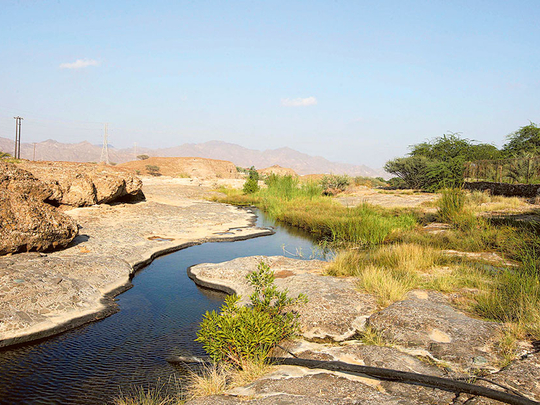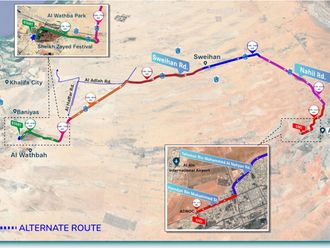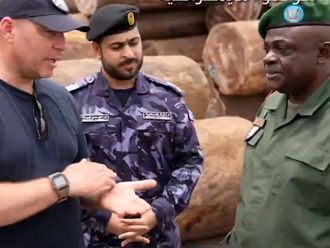
Hatta, Dubai: A Jayakar’s Oman lizard peeped through a hole through the small rocks just by the wadi, its brownish-greyish-green scales glistening in the afternoon sun.
“Our tour is complete!” exclaimed Dr Reza Khan, almost an hour into the walk. The wildlife and zoo management specialist at Dubai Municipality spotted the elusive lizard at its favourite place near the water once again.
Three types of lizards are found in this wadi but the Jayakar’s Oman lizard (Omanosaura jayakari) seemed to have the strongest effect on Dr Khan, who said he has spotted it there only about three times. It is endemic to the Hajar Mountains of Oman and the UAE.
Dr Khan took Gulf News on an afternoon visit to a wadi just behind the town proper of Hatta. The small wadi was a recent discovery for Dr Khan on one of his weekly field visits and inventories of the country’s flora and fauna.
“Actually, as a scientist, I did not know about this one. This wadi is just in the middle of the city but because it is behind all the houses, nobody bothers about coming here,” Dr Khan told Gulf News.
“In a way, it is pristine. If we come at the right time, we would see a lot of animals here.”
When asked about the name of the wadi, Dr Khan preferred to keep it ‘unnamed’ throughout the visit to “protect it”.
And because it is a relatively new sight for Dr Khan, a formal study still needs to be done to determine the depth, length, and size of the entire wadi, as well as the flora and fauna it supports.
“These wadis formed because of the rainfall coming from the upper regions of the mountains. They go down and break the stones, carrying stones with them and falling on other stones and breaking them, and the process continues,” Dr Khan said.
Half of the wadi has dried up while another portion branched out to a sub-catchment by the rocks where Arabian toads abound. Wadi fish like the garra barreimiae or the small blind cave fish also inhabit it.
The place is rich with beetles, larvae of other insects, a few frogs and tadpoles and birds such as the little green bee-eater.
At the entrance to the wadi is a “No Fishing” sign put up by Dubai Municipality. There are houses about 5m from the embankment.
Because of its proximity to the town proper, the threats to the wadi are mainly human encroachment that could result in polluting the water system.
“This wadi here is very important because it supports life. The government is not allowing anyone to damage it; no structure is being built here to protect it.”
“In Dubai, only Hatta has a wadi because Dubai doesn’t have any mountain ranges, only Hatta. But the Dubai government has been trying its bit, at least from the ’90s, the government is doing its best to retain whatever wadi systems we have here.”











